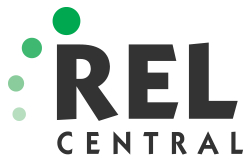If you weren’t familiar with the term “personalized learning” before March, you’ve most likely gotten caught up to speed on the concept since then.
According to the U.S. Department of Education, personalized learning “refers to instruction in which the pace of learning and the instructional approach are optimized for the needs of each learner.” As the education community has worked diligently to transition to a remote learning environment nationwide, this approach has attained a greater audience, as virtual classrooms by their very nature provide more opportunities for personalized learning to be practiced.
Research has shown that personalized, student-centered learning is generally more effective overall than the traditional, teacher-centered model, which maintains a fixed curriculum and pace. The Northwest Evaluation Association has also done some preliminary research on the impact that extended school closures during the COVID-19 pandemic could potentially have on widening achievement gaps. By embracing a more personalized approach to learning, a more effective path to narrowing these gaps could be achieved, as personalized approach offers students the space and time necessary to master learning objectives and does not restrict learning to a classroom setting.
As part of the REL Central webinar Personalizing Instruction to Address COVID-19 Learning Gaps, Westminster Public Schools’ Jeni Gotto, executive director of teaching and learning; Dylan Shelofsky, elementary teacher; and Kodi Kelly, secondary teacher, discussed ways that teachers can personalize learning by working with students to help them define their goals and understand the learning goals they need to acquire, and by focusing instruction on individual student needs.
According to the presenters, to personalize learning in any classroom setting, the first step is developing a shared understanding of the learning goals with their students. For example, asking a student to articulate what a learning goal requires them to know and be able to do, along with why they are working to accomplish the learning goal, allows the student to then understand their purpose in working toward this goal and see the value in it.
“Pull the most essential 10 skills of the year. What should a ninth grader [for example] be able to do in this class by the end of the year?” said Kelly. “Lay those out. What should be taught first, second, third, fourth, fifth, and show them that this is where we are going.”
While overarching grade-level goals are important, according to the presenters, breaking down year-end goals into smaller skills and competencies can help students recognize the skills they are competent in and those they need to improve upon.
“Rather than writing a five-paragraph essay,” Kelly said, “[a student’s] goal is just to write complete sentences about this idea.” Once this smaller skill is mastered, the student can work on the next skill, until the grade-level goal is mastered.
For students to see self- and teacher-initiated evaluation as a method for improvement, they should see failure as a part of the learning process and identify learning as a progression to competency. To do this, the presenters suggest that students track their own progress using student data notebooks that describe each learning goal and include charts to record progress.
While the general structure is simple enough, the presenters recommend that teachers should prepare to only speak to the entire class for roughly 20 minutes in a typical class period, with the rest of the time devoted to working with individuals or small groups of students by need.
“It’s not going to be the traditional teacher in front of the classroom,” said Shelofsky. “There might be some controlled chaos. But that means that every single kid in your class is actively learning.”
All three educators agreed that from their experience, there was no better way to support students working to catch up than to harness that chaos to provide individualized support.
For a more detailed explanation of ways to personalize education in your classroom or to learn more about this topic, please watch the short quick chat.





